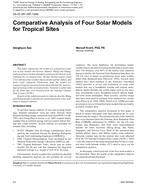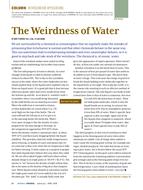Driving rain is one of the major sources of moisture in building envelopes causing moisture damages. Depending on the capillary absorptivity, moisture storage of surface materials, and the rate of driving rain, a water film forms and runs down the wall, leading to an important accumulation of water and an increased risk for rain penetration and leakage. In this paper the driving rain distribution in time and space and the occurrence of runoff for different building typologies is analyzed: a tall and a long low-rise building, a building with an opening, and a tall building with an underpass. A computational fluid dynamics (CFD)- based model for driving rain is combined with a heat and moisture transport model for capillary active materials and a runoff model is added based on the thin film theory. Driving rain and runoff intensities are highest at corners and edges of the building, while a sheltered zone at the bottom of the building may exist. Runoff depends also on the moisture transport characteristics of the surface material. The use of semi-empirical relations based on driving rain coefficients for evaluating the driving rain intensity is critically analyzed. It is concluded that the driving rain coefficient should be handled with care, since it is found not to be a constant during time for a given place on the building facade.
Citation: Thermal Performance of Exterior Envelopes of Whole Buildings IX
Product Details
- Published:
- 2004
- Number of Pages:
- 13
- File Size:
- 1 file , 6.6 MB
- Product Code(s):
- D-BldgsIX196


